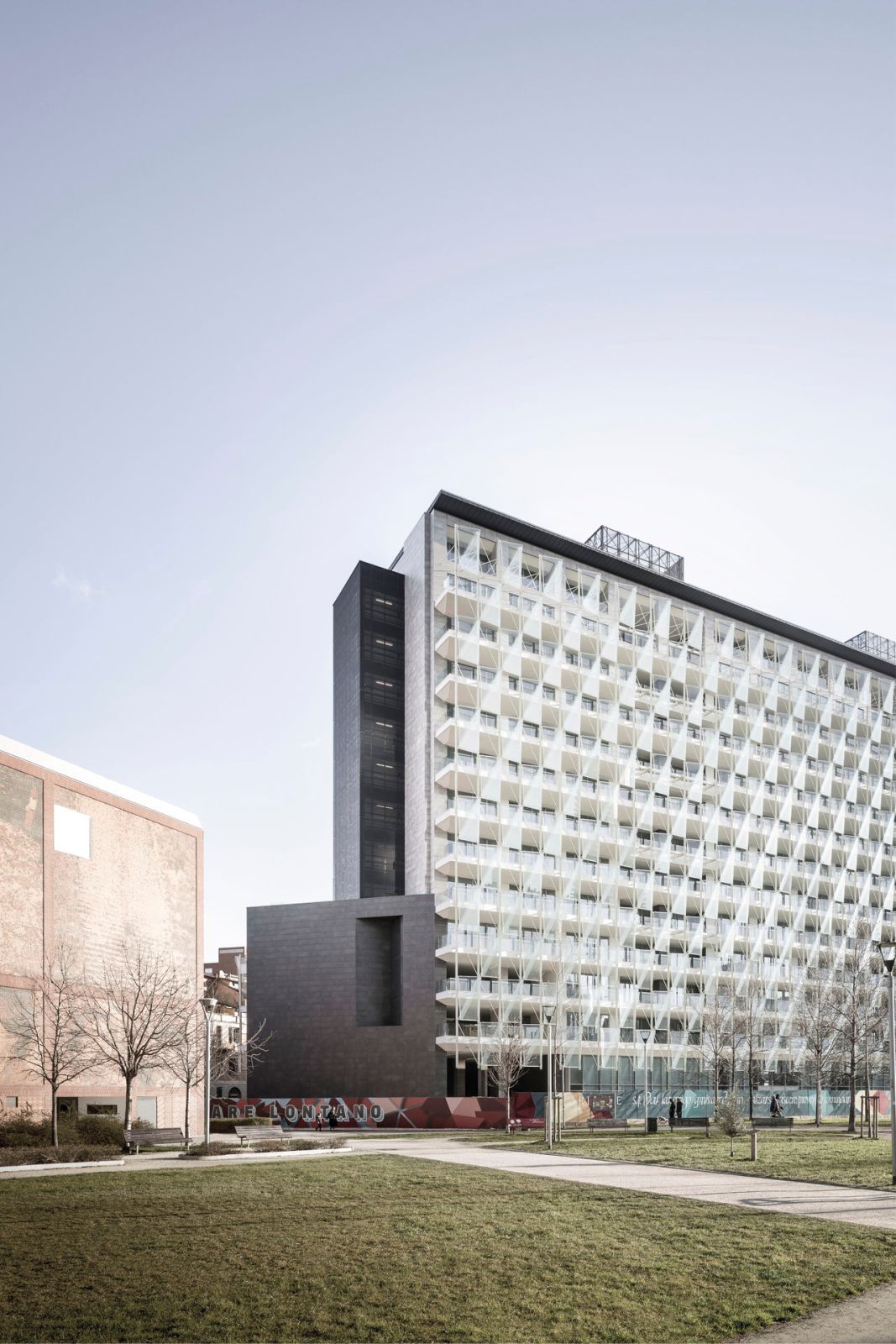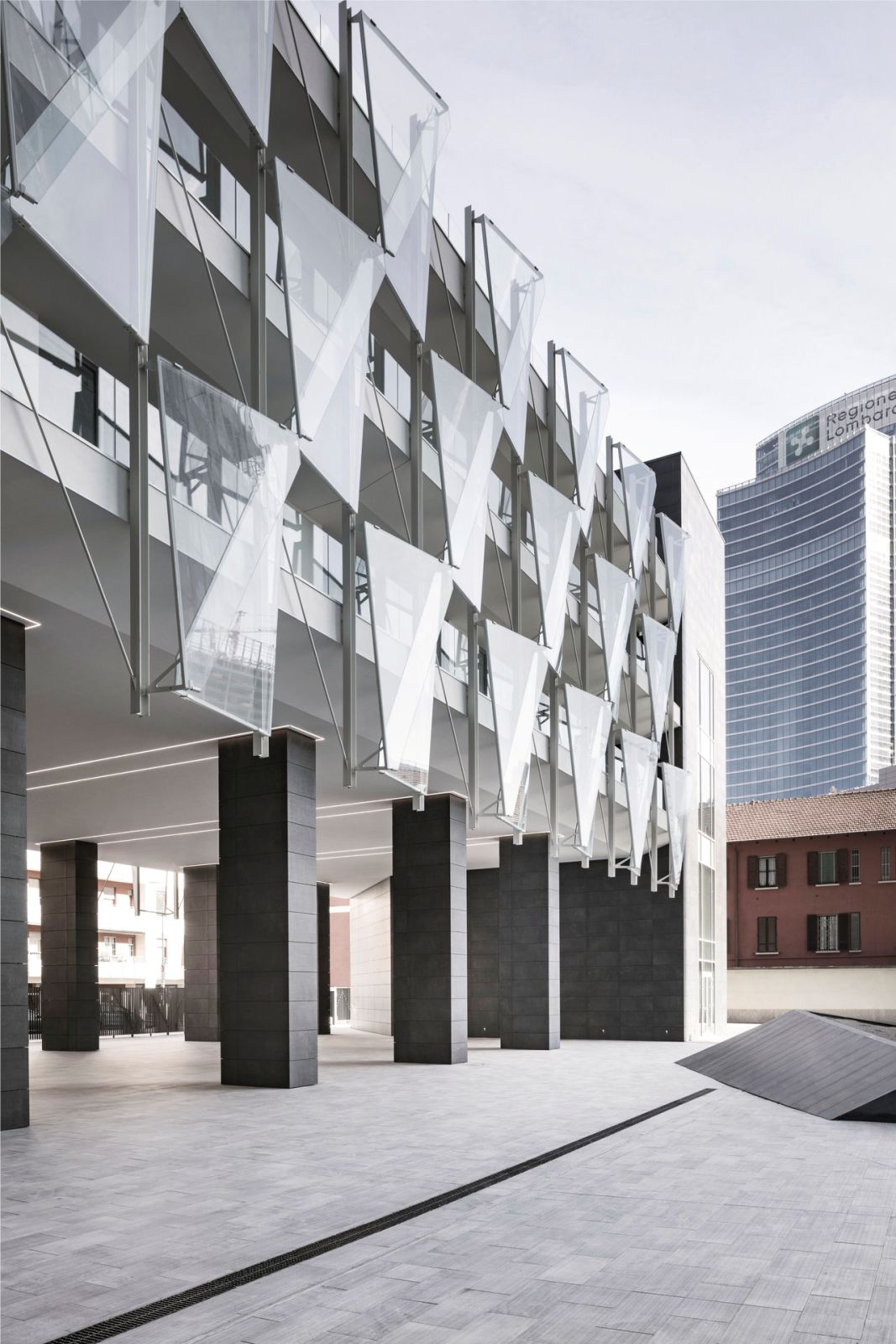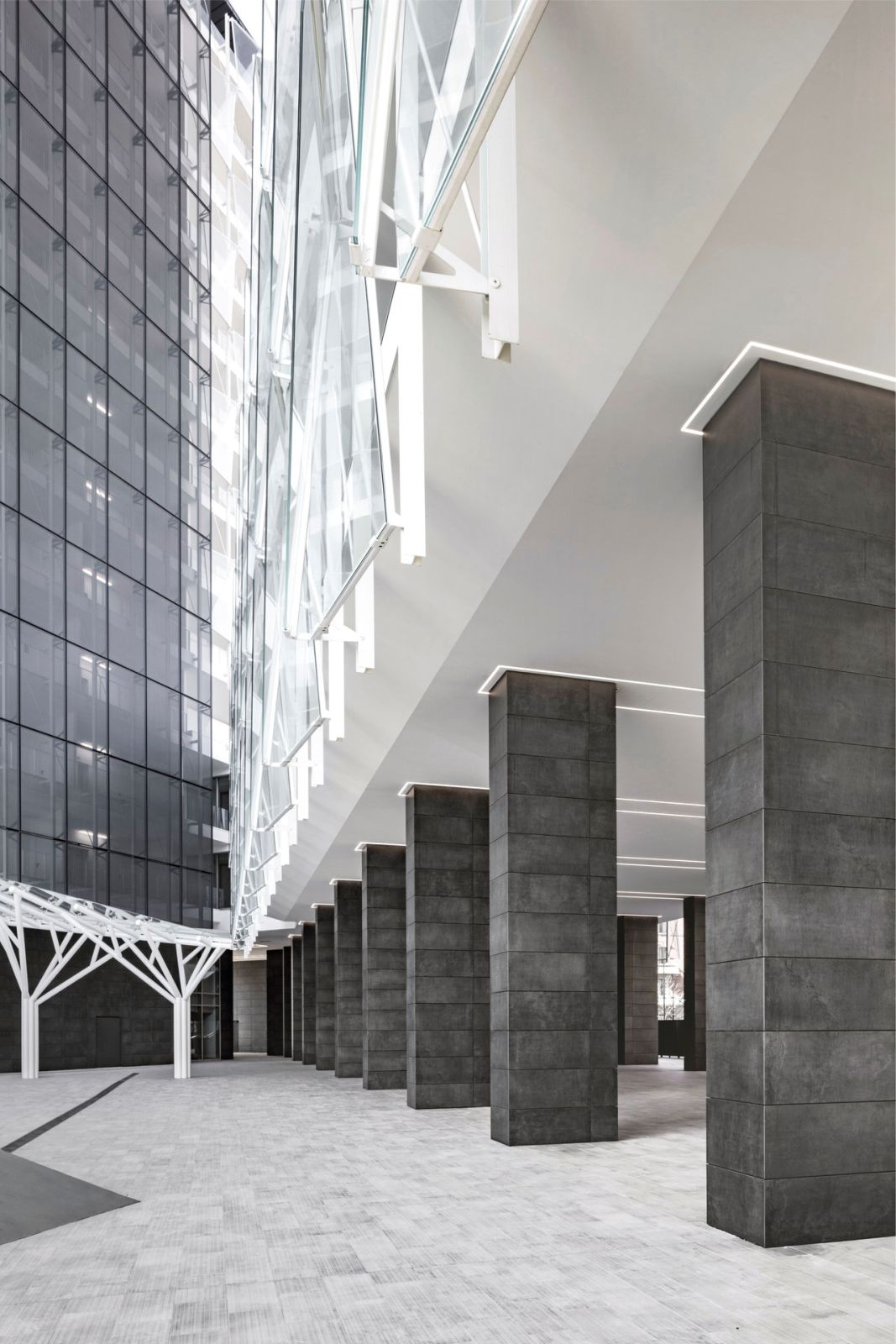Redeveloped by Progetto CMR, the complex was built using Active Surfaces® ceramics supplied by Fiandre Architectural Surfaces, installed on Granitech® ventilated façades Chicago | Il CTBUH – Council on Tall Buildings and Urban Habitat has assigned the Award of Excellence 2022 to the building De Castillia 23 in Milan, in the “Best Tall Building under 100 meters” category.
Every year, skyscrapers all over the world are selected by a special jury according to the requisites of excellence, innovation and creativity, and compete as finalists in their related award categories. The projects are assessed overall, starting from their relationship with the urban fabric, their concept and how this is developed into pioneering design and technological solutions.

The De Castillia 23 project, owned by the Unipol Group and redeveloped by Progetto CRM, has brought an old building in the Isola district of Milan back to life years after it was abandoned and left unfinished, returning to the city an example of innovation with two buildings 53 and 15 metres high. The works were carried out by Progetto CMR – Italian leader in integrated design – which enhanced the functions, energy performance and overall efficiency of the building, while revolutionising its purely aesthetic aspects.
A key element of the project is the prismatic façade with triangular windows creating a rhombus pattern that gives it a dynamic, living appeal: each one is at a different angle, creating games of light depending on how they are hit by the sun. For the external façade, Progetto CMR wanted a pale background to reflect the light, in contrast with a darker colour.


And the choice fell on the eco-active porcelain Active Surfaces®
by Fiandre Architectural Surfaces, specifically Core Shade surfaces in textures Cloudy Core Active and Sharp Core Active. The ceramics were applied using the Granitech® ventilated façade system with visible joints, a solution that guarantees long life especially for tall buildings, along with durability of the walls and energy efficiency.
An air gap between the wall and the covering promotes natural ventilation, offering significant benefits in removing heat and humidity while assuring high interior comfort. This also eliminates thermal bridges, bringing energy savings and increasing the efficiency of the outer insulation, which remains perfectly dry thanks to the optimal ventilation.


The decision was made to use porcelain stoneware both for the façades and the terraces and outdoor paved areas due to its beautiful appearance, high technical performance and lasting strength of the material. Today, the issue of vertical urbanism poses new problems to be tackled, linked particularly to sustainability and the fight against the effects of climate change.
De Castillia 23, designed entirely using BIM, is an example of green and sustainable architecture, using photovoltaic and geothermal systems to produce heat and energy, also thanks to the choice of coverings in porcelain stoneware, a natural material produced in Zero Emissions production plants. Source and photos Courtesy of Nemo Monti.

